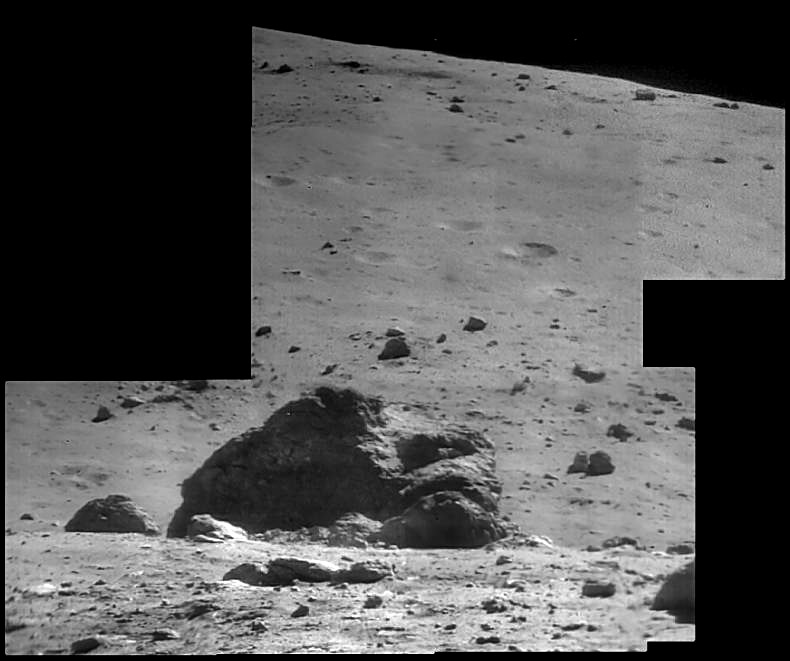
image compiled from Apollo 16 video footage, mosaicked byTony Gondola
Thirty-five years ago today, while on the rim of the kilometer-wide North Ray Crater, Apollo 16 astronauts John Young and Charlie Duke spied a boulder so big that Duke called it House Rock. At 12 m high and about 25 m wide it is probably one of the largest blocks of debris excavated by North Ray Crater. It was darker than its surroundings and might finally be the highland volcanic material that the crew expected. House Rock was a massive boulder, so much so that they couldn’t sample it, and instead got pieces of a similar but smaller, nearby rock called Outhouse Rock. These samples weren’t volcanic, but like nearly everything else at Apollo 16 are brecciated rocks made of fragmented bits and pieces of rock smashed by impacts. The reigning interpretation is that nearly all the Apollo 16 samples are breccias from the formation of the Imbrium Basin, more than 1000 km distant. Based on these Apollo 16 results, the idea of highland volcanism has almost disappeared (except for special cases such as the Gruithuisen domes), yet I wonder if we have mislead ourselves. Some of the Apollo 16 rocks thought to be from Imbrium actually formed 3.76 billion years ago - nearly 100 million years after the Imbrium event. We still have a lot to learn about the Moon.
Technical Details:
April 22, 1972. Tony writes: To make this 7 frame mosaic, surface video segments where the camera was motionless were cut and saved. At that point the processing workflow was very much as you would do for earth-based lunar images. The AVI files were aligned, stacked and sharpened with wavelets in Registax. The individual images were then cropped and assembled into a mosaic. This was followed by final levels adjustments, sharpening and noise reduction. The final result is reduced to 60% of original size. CAW enhanced the contrast - Ton’y original version is here.
Related Links:
Apollo 16 exploration
Yesterday's LPOD: Sliced in Half II
Tomorrow's LPOD: Magnificent Side View
COMMENTS?
Register, Log in, and join in the comments.



